
So this one marks a milestone of sorts, in that it is among the first images I’d taken with a digital camera. Kinda. Okay, let me explain.
It’s 2004, by the way. Walkabout’s Occasional Foreign Correspondent, Jim Kramer, had gone digital long before I had, and in fact had just upgraded his camera from a Sony F717 to the F828, and was selling the former. To a friend of mine, who needed a little time to get the cash together. Knowing I was in Florida and husbanding my money between shooting gigs, Jim sent the camera to me as a loaner until the buyer had the cash, whereupon I would ship it onward. So I had a chance to do a lot of digital shooting and experimentation until then, and I took horrendous advantage of it. This photo, the one above, was among the first handful of tests upon receiving the camera and ensuring that the battery was charged, before I reset the counter to zero and started ‘officially’ counting. It’s a thinstripe hermit crab (Clibanarius vittatus) collected from the Indian River Lagoon nearby, and shot within my barebones saltwater aquarium. Which was nowhere near large enough to maintain a crab of this size – the shell is not quite the size of your fist – so it was photographed and released, possibly the same day. A little over an hour later, the counter had been reset and I was wading out in the lagoon itself looking for subjects when a heron attracted my attention – that was frame 2.
Now, I’d shot more than a few digital images before this, some with a cheapo camera, and a lot for an event the previous year where I was filling in for an ill Jim (which may pop up much later on,) but this is among the first of my digital stock images. Count it as you will.
Nine years later in 2013, I was back in NC and did an outing for Earth Day.

And boy, did I have an outing – there are several hundred frames bearing this date, with a wide variety of subjects. I could have made several posts on those couple of hours alone, but we’re just going to go with a representative one here, of a pair of eastern tiger swallowtails (Papilio glaucus) partaking of a wild azalea bush, down at the edge of the Eno River not far from where we used to live.
Let’s have one from just last year.

Ambling around the nearby pond, I was greeted by this little spud while chatting with a friend. As diseased as it looks, everything’s fine – this is just a newly-fledged white-breasted nuthatch (Sitta carolinensis) who doesn’t have all of its adult feathers in yet. There’s a good chance that it had bailed the nest only that morning, and the folks were monitoring from a short distance off as it got its flying skills together, but this gave me the chance for a few closeups.
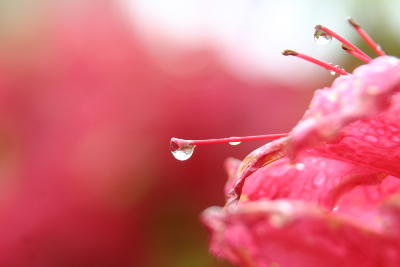 I’m including one not from this date, but the next (in 2011,) because it attracted my attention as I was digging through the stock folders for this post.
I’m including one not from this date, but the next (in 2011,) because it attracted my attention as I was digging through the stock folders for this post.
We start with the full frame. I wasn’t absolutely sure where this was taken – some events I have memorized fairly well, but azaleas can be found in a lot of locations and I wasn’t sure if this corresponded to a particular image or not. This is the full frame at right, but we’re going to go in to full resolution on a portion in the upper right corner to get a clue – you might call this forensic nature photography. Enhance. Enhance!
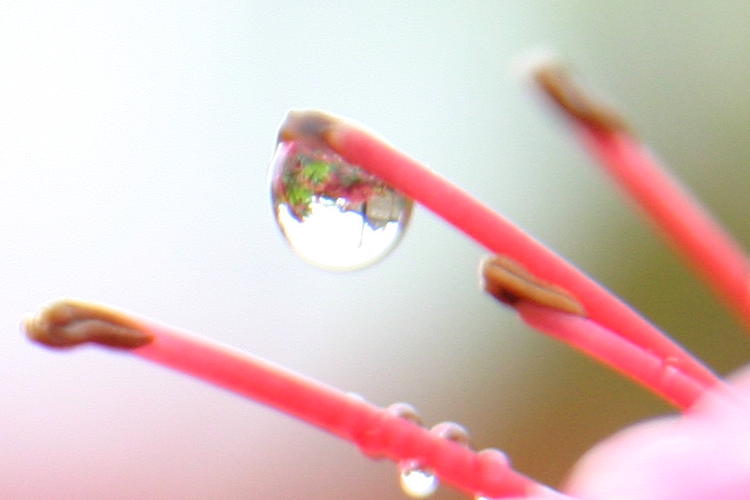
Annnddd that tells me what I needed to know. This was certainly not one of the azaleas in our own yard, because that’s a hall simply known as South Building on the campus of the University of North Carolina in Chapel Hill. Which means this was taken among the broad patches of azaleas that flank Old Well, a landmark and the representative icon of UNC. So, same time as the image of the landmark at this post (seen more creatively here as well, but that was an entirely different day.)
And of course, it’s Earth Day, and you have fewer excuses about not getting out to experience it, so get cracking! We’ll see what I’ve scared up a little later on.






















































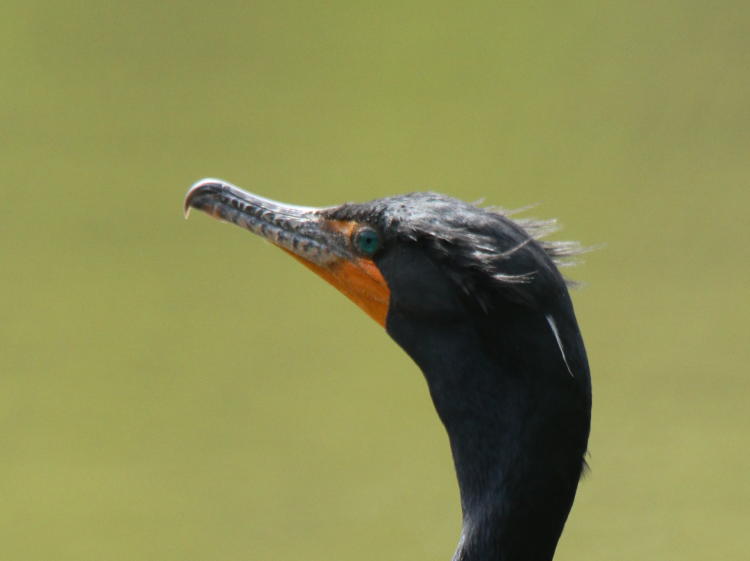
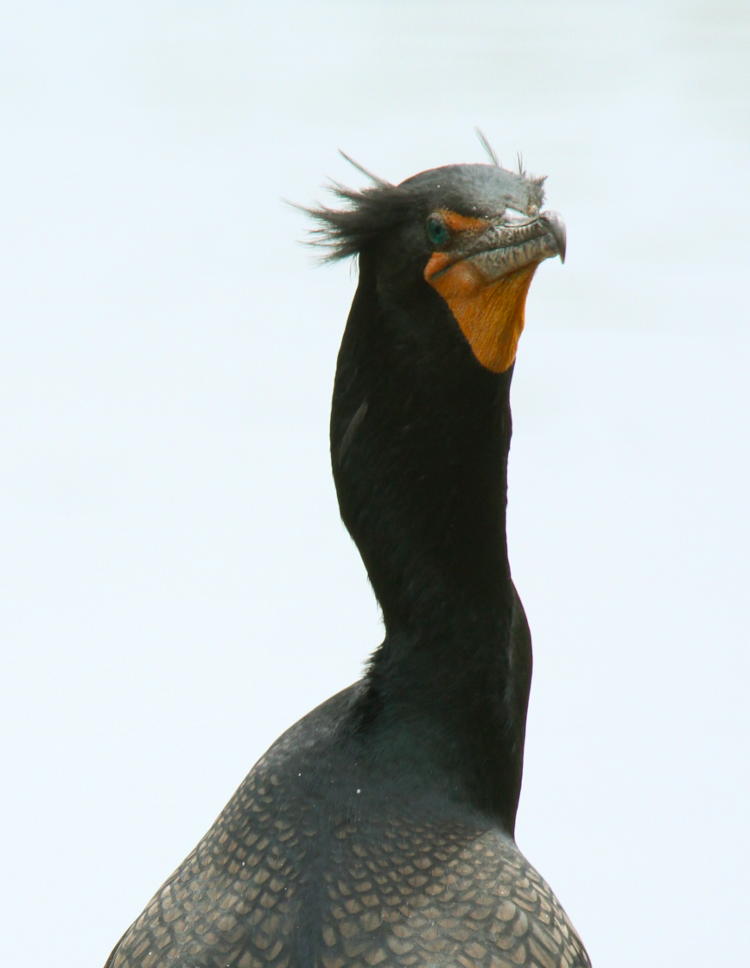

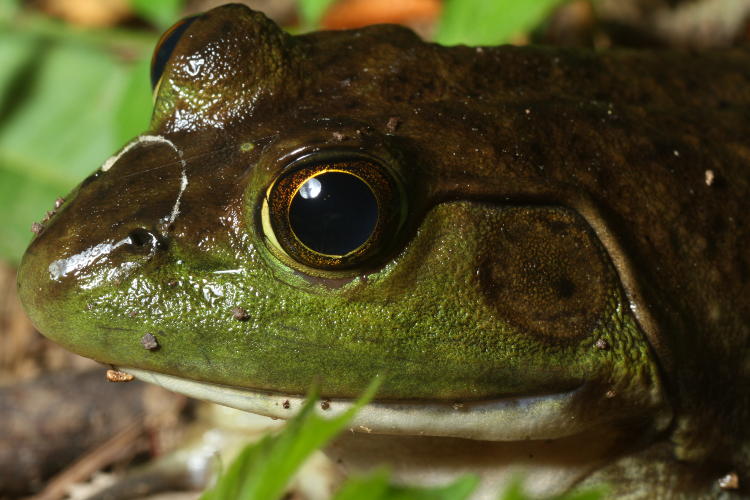



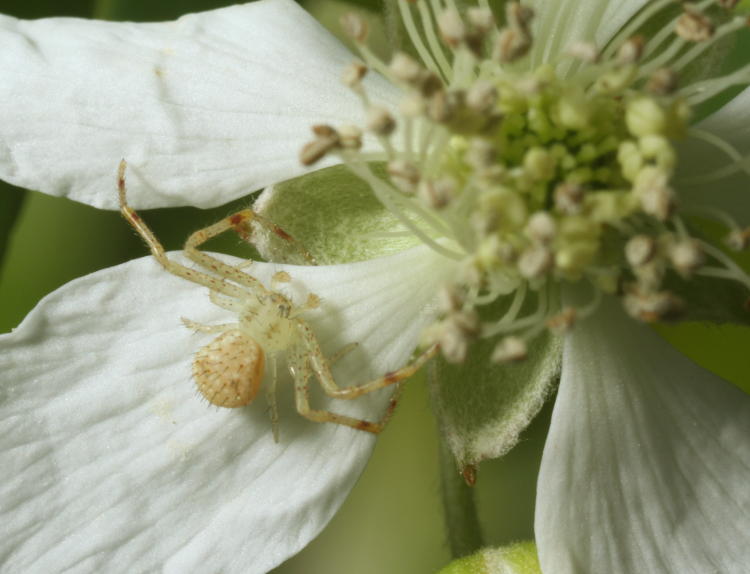

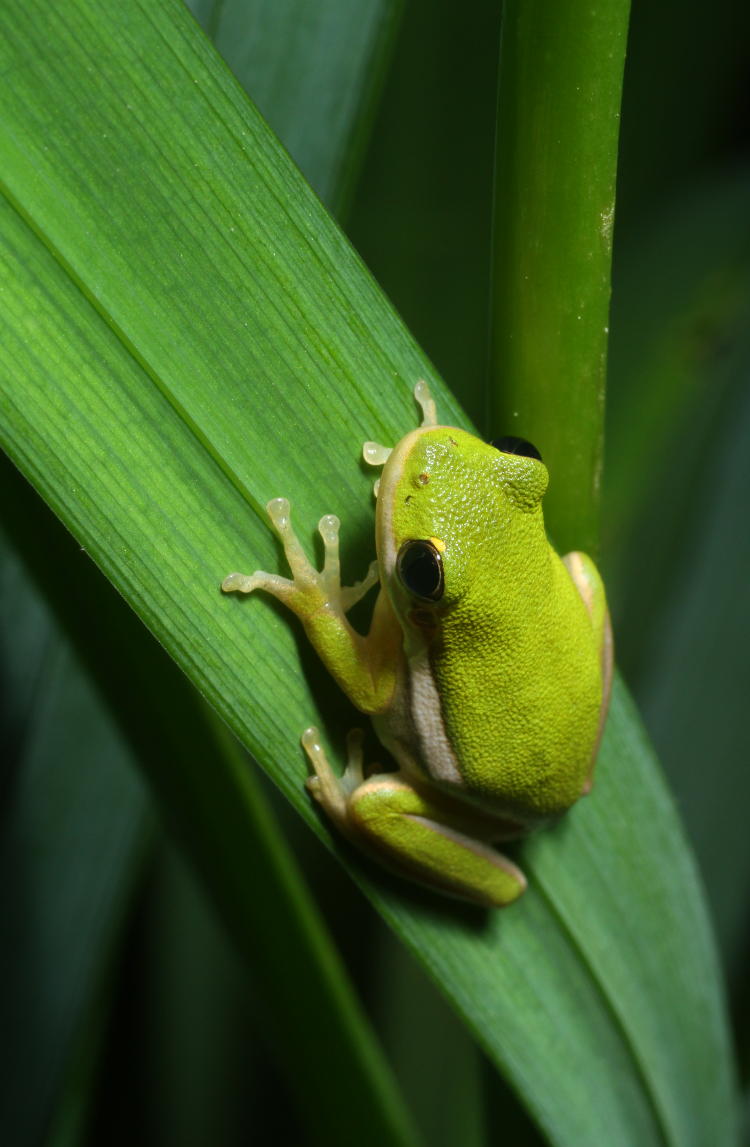
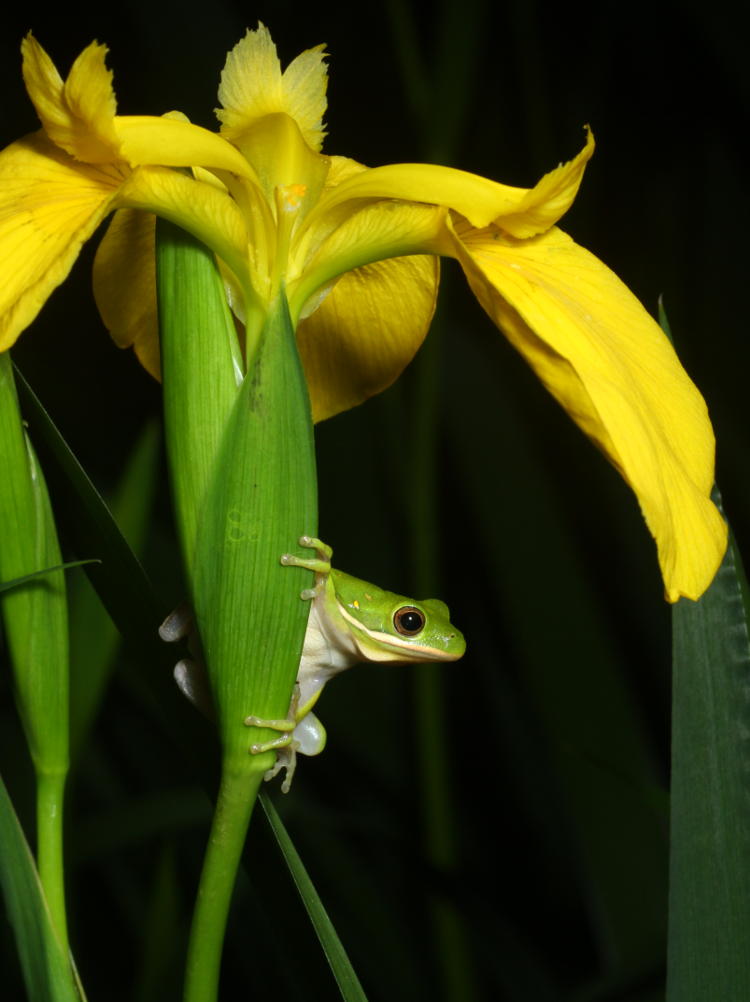
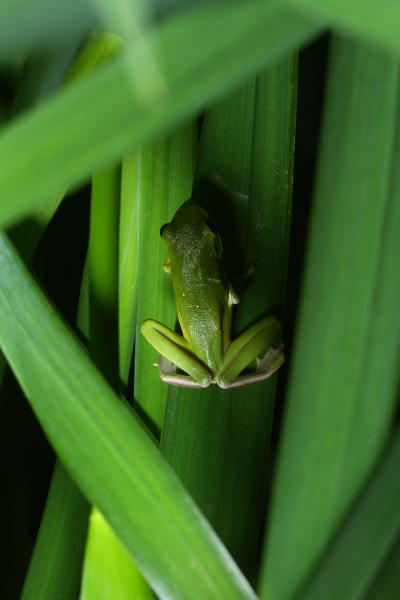 Now, a small confession: the iris blossoms don’t last long, and I liked the complementary colors, so the image above was actually slightly staged. The frog therein originally appeared as it is to the right, deep among the reedy leaves, and I gently scooped it up and deposited it at the base of the blossom, where it posed quite professionally. So yeah, the frog didn’t go there on its own when I was around, but it was less than a meter away and living among the irises on its own, so sue me for tweaking it towards a much nicer composition. Everybody else was as found, including the one below, perched on a plant hanger in our front garden, a couple of meters from the front door.
Now, a small confession: the iris blossoms don’t last long, and I liked the complementary colors, so the image above was actually slightly staged. The frog therein originally appeared as it is to the right, deep among the reedy leaves, and I gently scooped it up and deposited it at the base of the blossom, where it posed quite professionally. So yeah, the frog didn’t go there on its own when I was around, but it was less than a meter away and living among the irises on its own, so sue me for tweaking it towards a much nicer composition. Everybody else was as found, including the one below, perched on a plant hanger in our front garden, a couple of meters from the front door.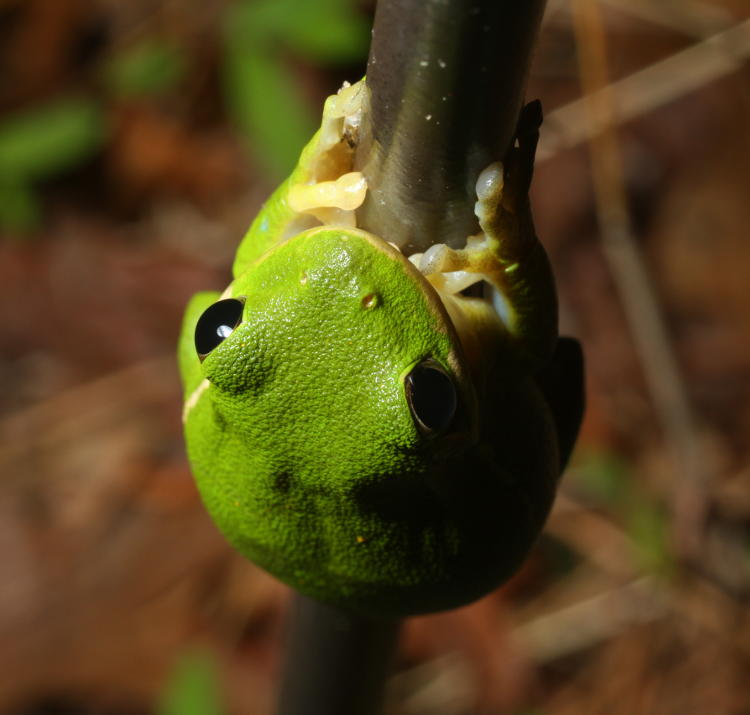


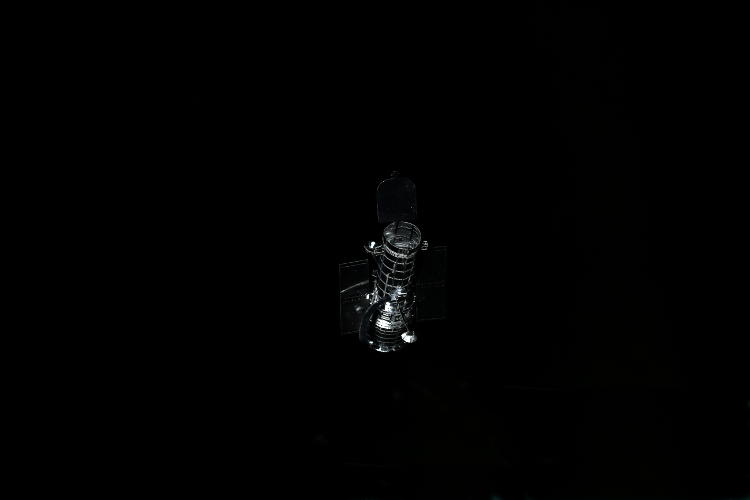
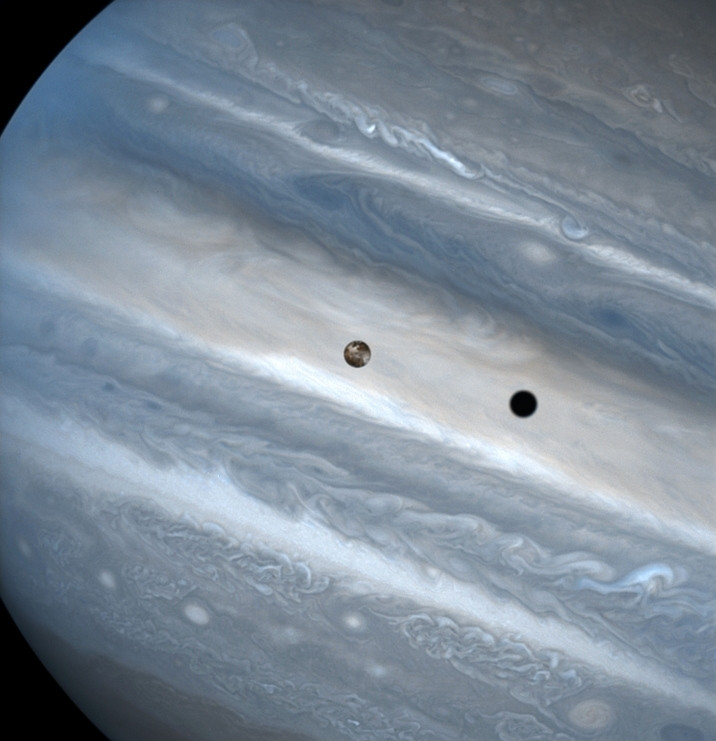

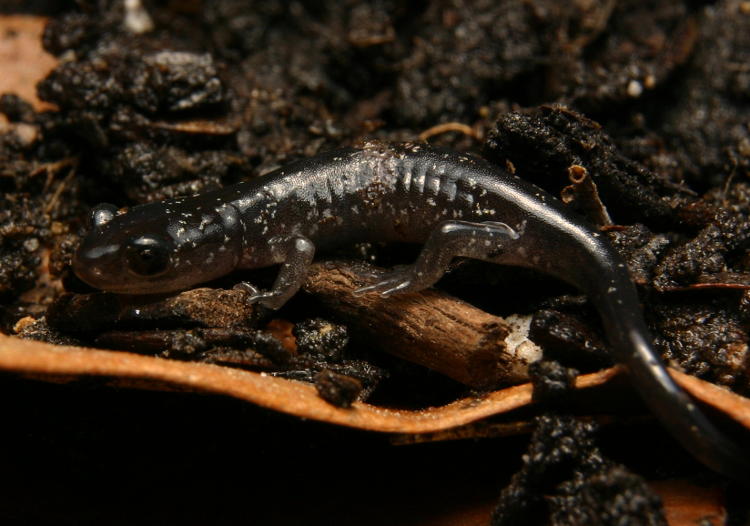
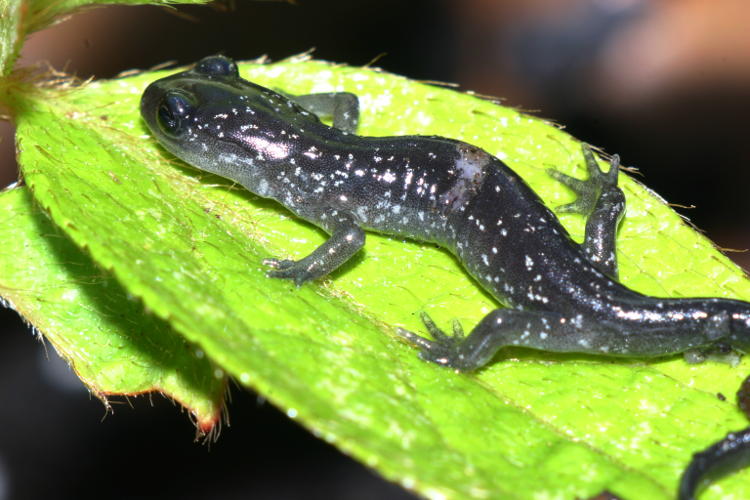
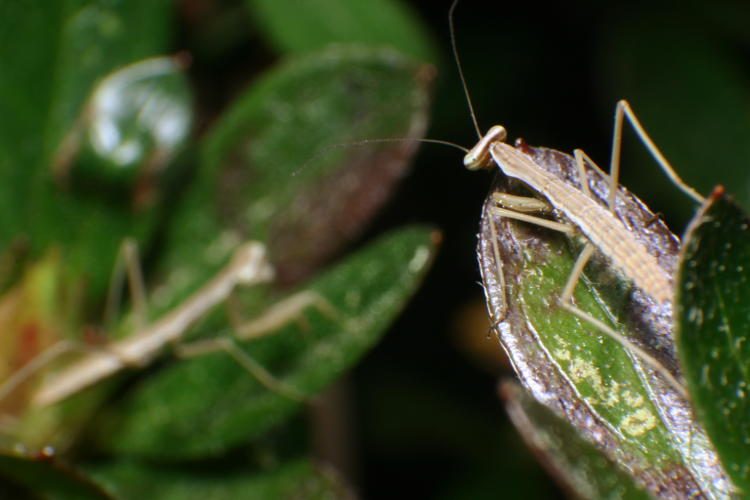 The following year (that’d be 2013) was the first mantis hatching that I could observe and follow, and the juvies were swarming all over the azalea bushes and immediate environs. These are the ubiquitous Chinese mantis (Tenodera sinensis, though at that time I was calling them Tenodera aridifolia sinensis – I’m not sure at what point the Latin name was changed and I was likely behind, but so it goes.) This image could to be said to have a much more menacing aspect than above, or not, depending on how you’re seeing it, but the former is potentially more accurate – I have more than a suspicion that they may prey on one another if they get the opportunity, though I have never witnessed it myself. I have seen very few of them at this size feeding on anything, partially because they’re still very shy at this age and tend not to like me looming around. Though I did
The following year (that’d be 2013) was the first mantis hatching that I could observe and follow, and the juvies were swarming all over the azalea bushes and immediate environs. These are the ubiquitous Chinese mantis (Tenodera sinensis, though at that time I was calling them Tenodera aridifolia sinensis – I’m not sure at what point the Latin name was changed and I was likely behind, but so it goes.) This image could to be said to have a much more menacing aspect than above, or not, depending on how you’re seeing it, but the former is potentially more accurate – I have more than a suspicion that they may prey on one another if they get the opportunity, though I have never witnessed it myself. I have seen very few of them at this size feeding on anything, partially because they’re still very shy at this age and tend not to like me looming around. Though I did 
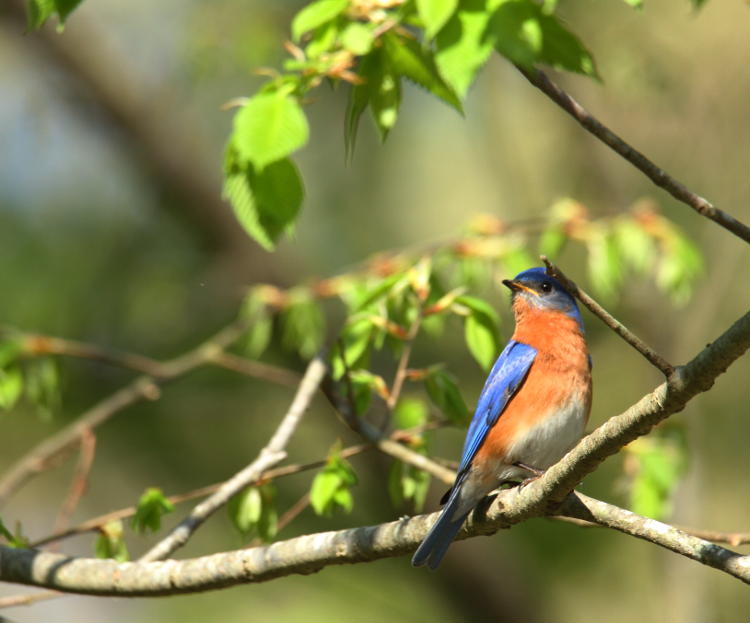
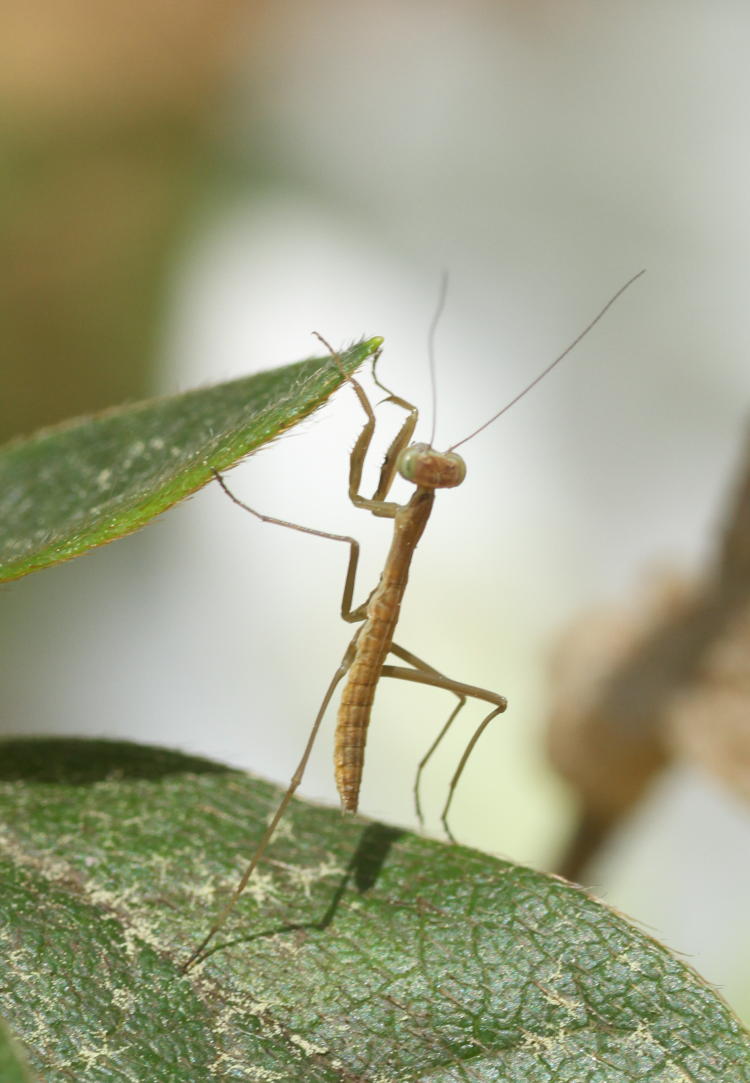

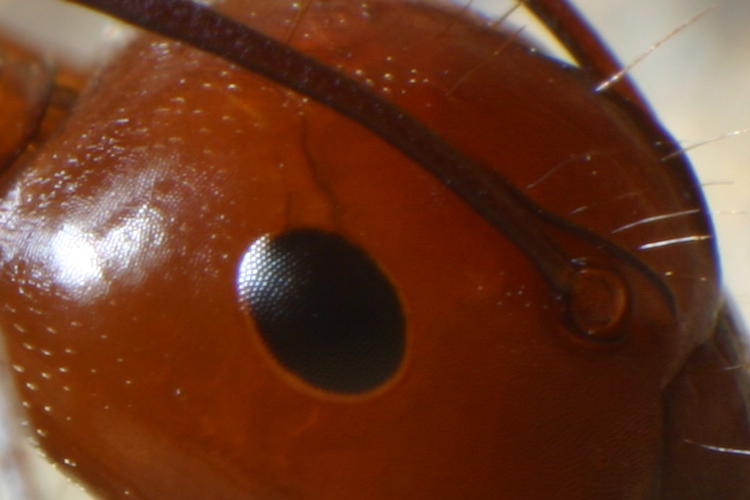

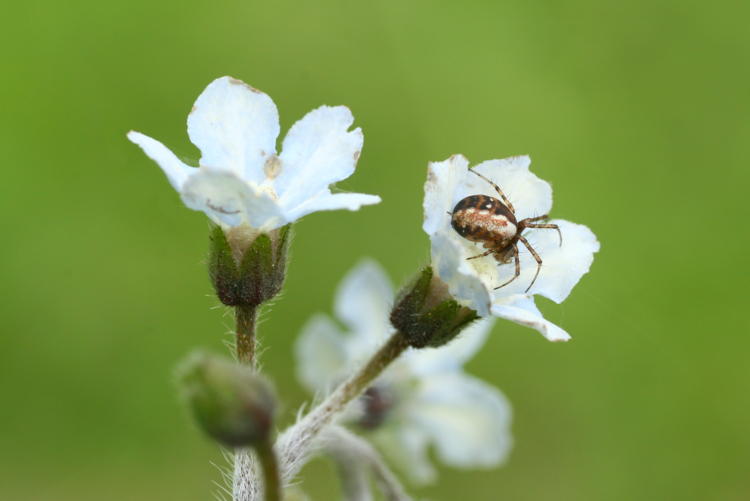

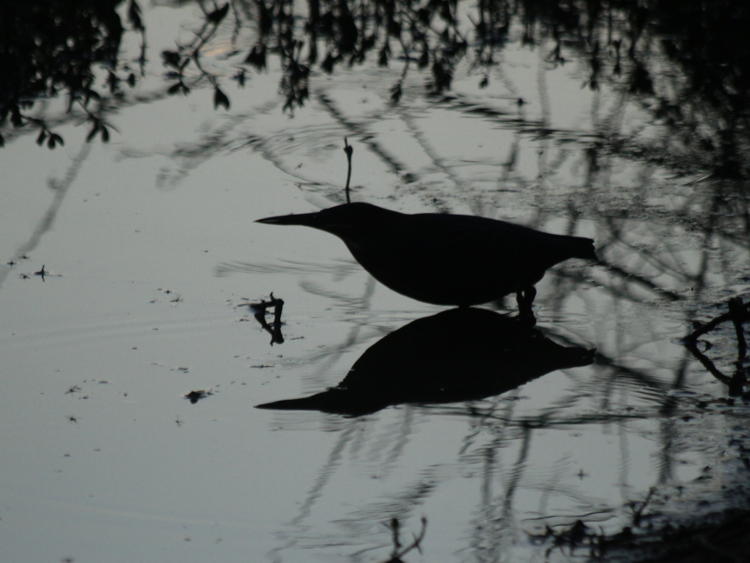

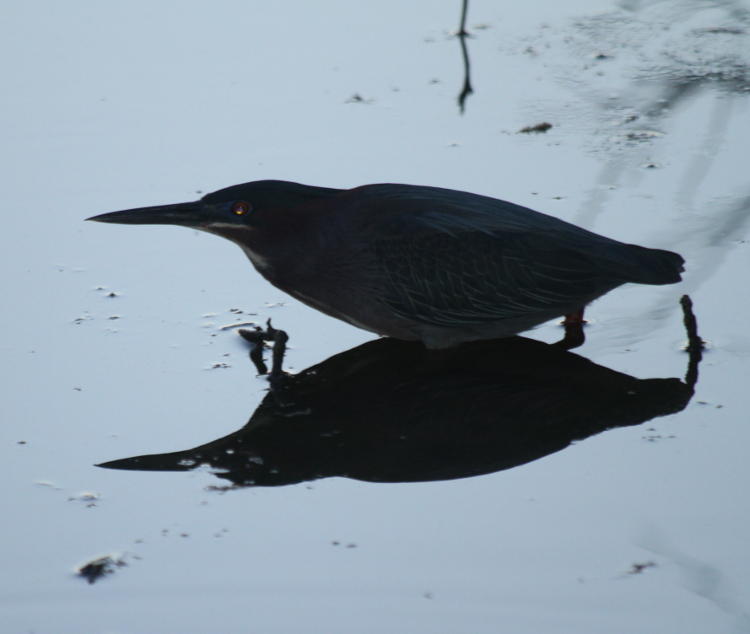
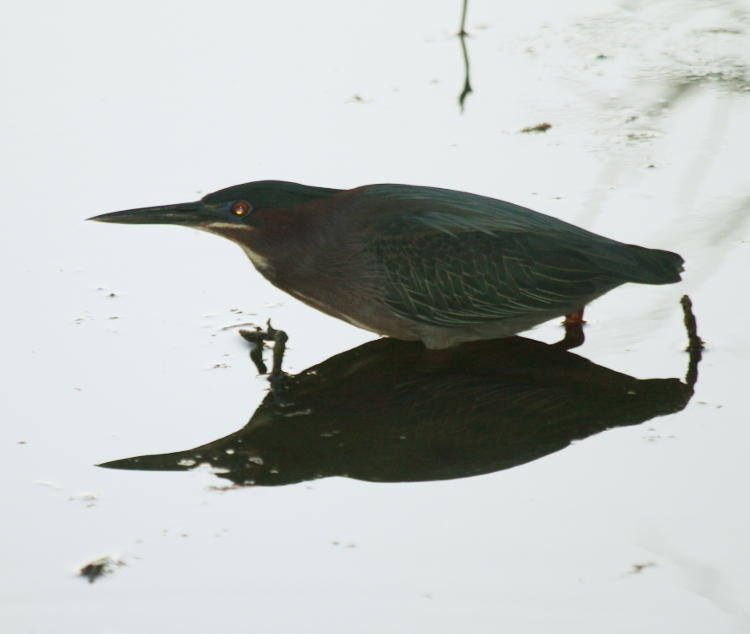

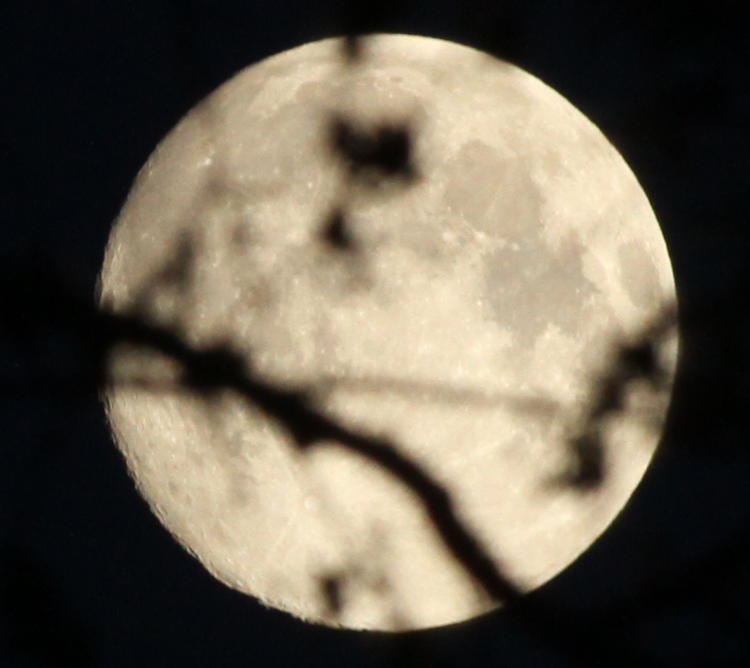
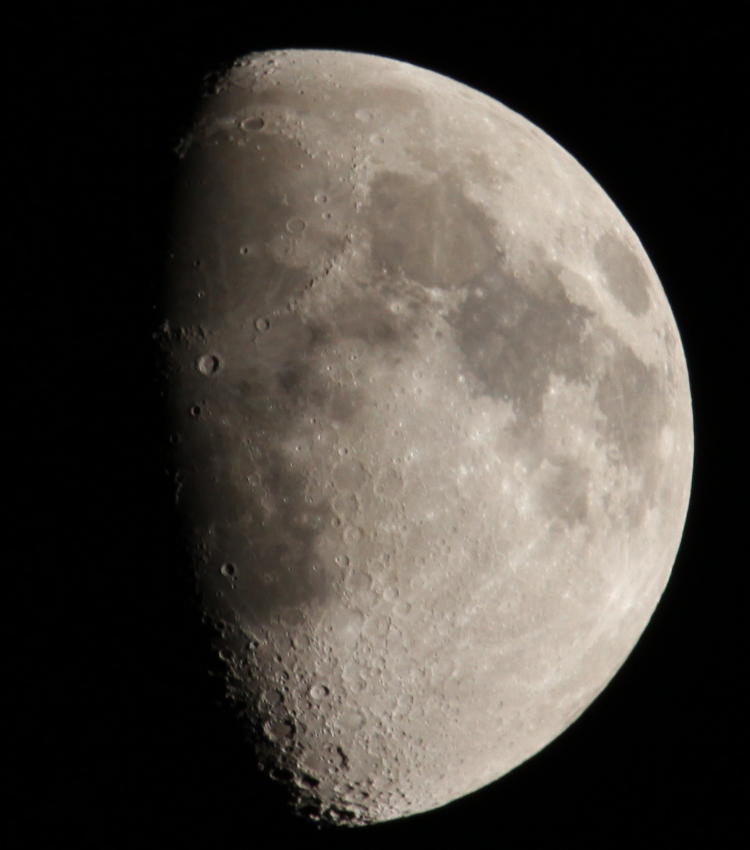


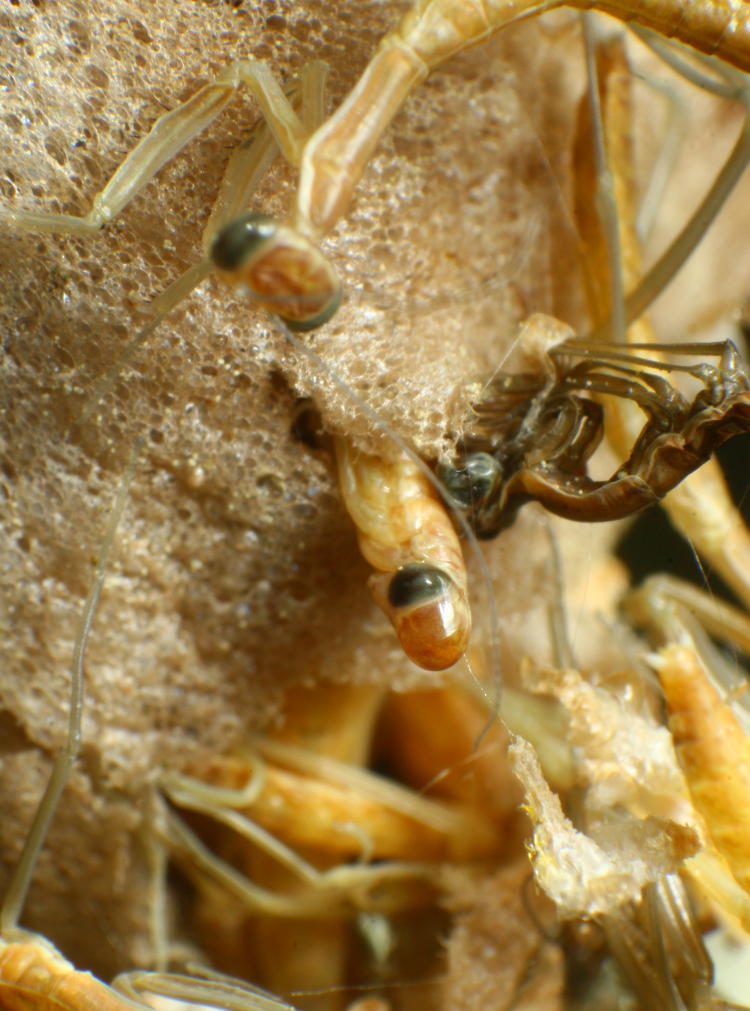
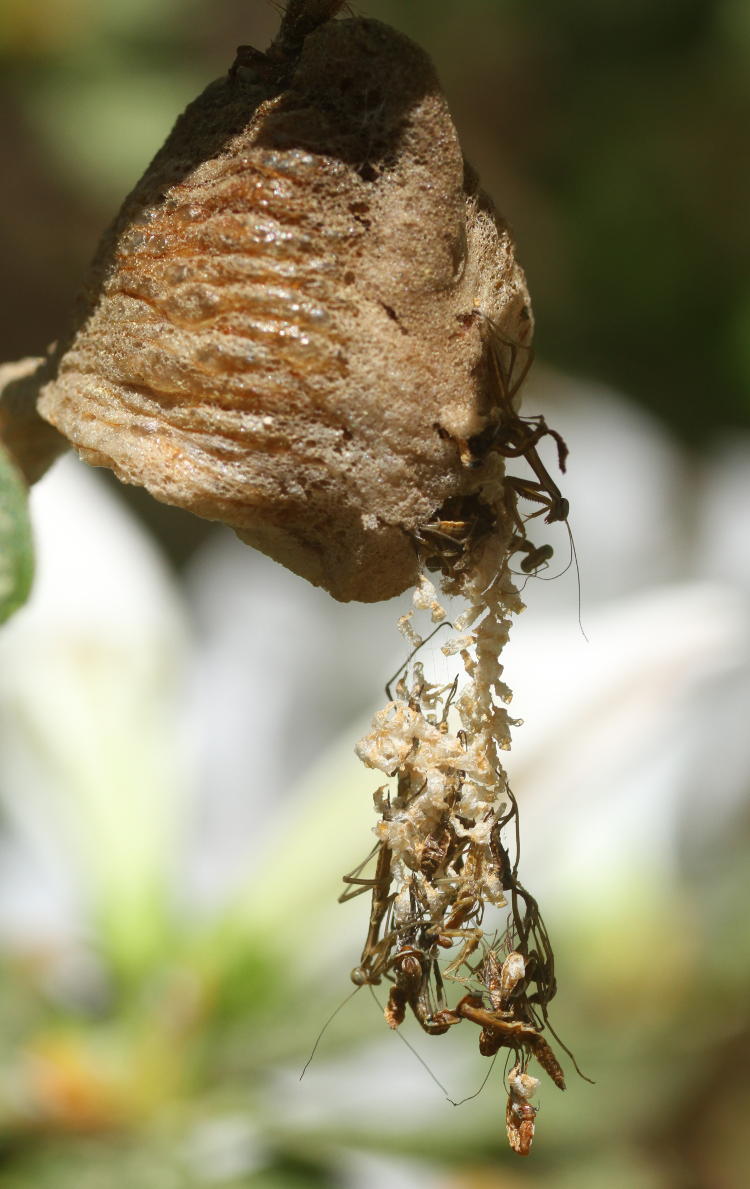

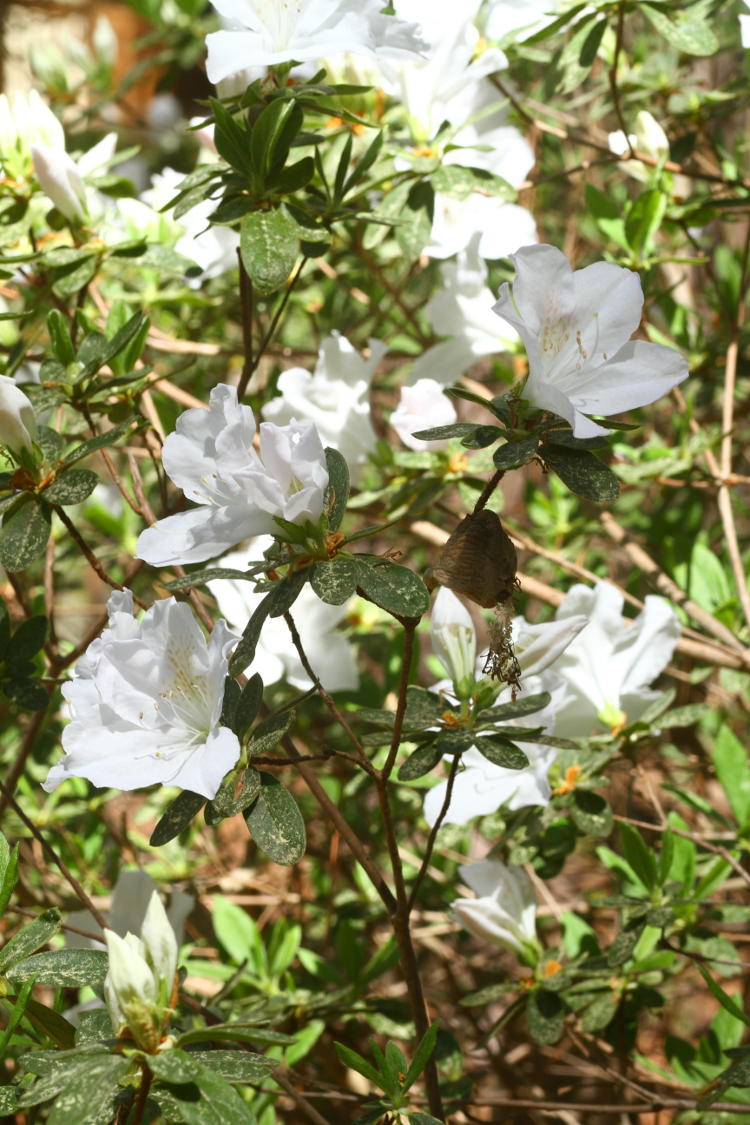
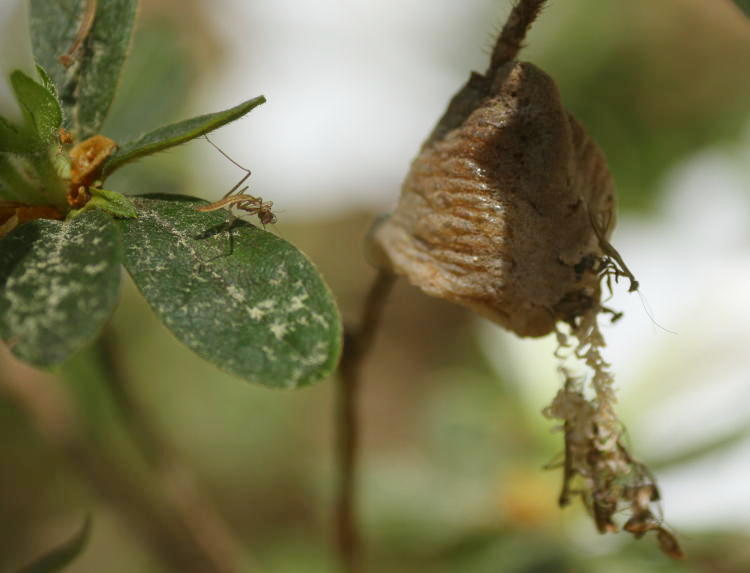

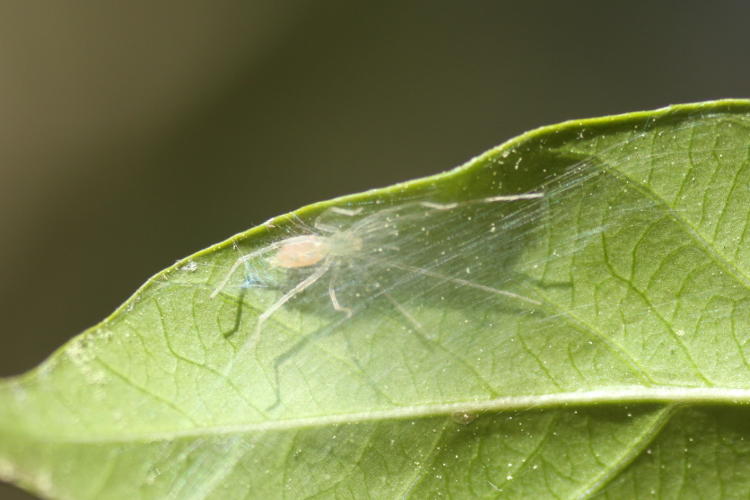
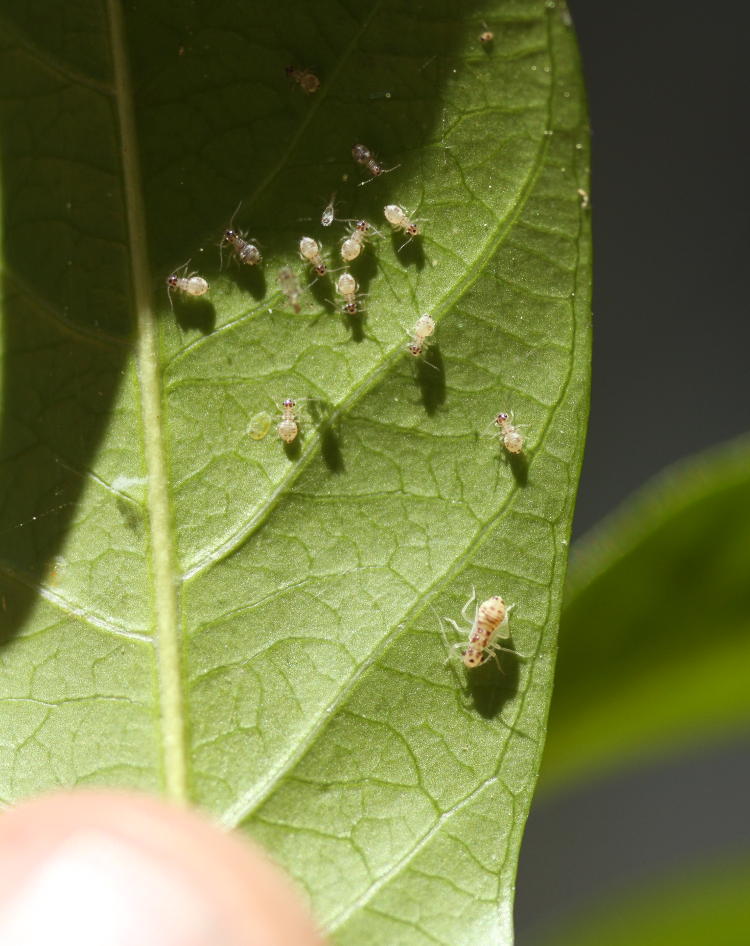
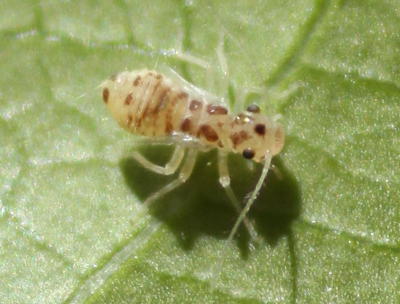 I had to turn the leaf over to expose them to the sun (that’s my thumbtip in the corner,) and it was making them antsy, so these shots lack the detail I can usually obtain. I have only the faintest idea what these might be, because they resemble the springtails that I’ve found on water surfaces, but they’re much bigger and of course not on or near the water. The larger one among the smaller gives the impression of a mother and brood, but the closer look makes them all appear to be juvenile/nymph form, so that pretty much exhausts my guesses regarding the species, and I simply don’t feel like submitting them to BugGuide.net right now – this post has been delayed long enough, plus I’m not that interested in them anyway. We’ll just call them doodlebugs because it seems appropriate and leave it at that. Professionalism all the way.
I had to turn the leaf over to expose them to the sun (that’s my thumbtip in the corner,) and it was making them antsy, so these shots lack the detail I can usually obtain. I have only the faintest idea what these might be, because they resemble the springtails that I’ve found on water surfaces, but they’re much bigger and of course not on or near the water. The larger one among the smaller gives the impression of a mother and brood, but the closer look makes them all appear to be juvenile/nymph form, so that pretty much exhausts my guesses regarding the species, and I simply don’t feel like submitting them to BugGuide.net right now – this post has been delayed long enough, plus I’m not that interested in them anyway. We’ll just call them doodlebugs because it seems appropriate and leave it at that. Professionalism all the way.